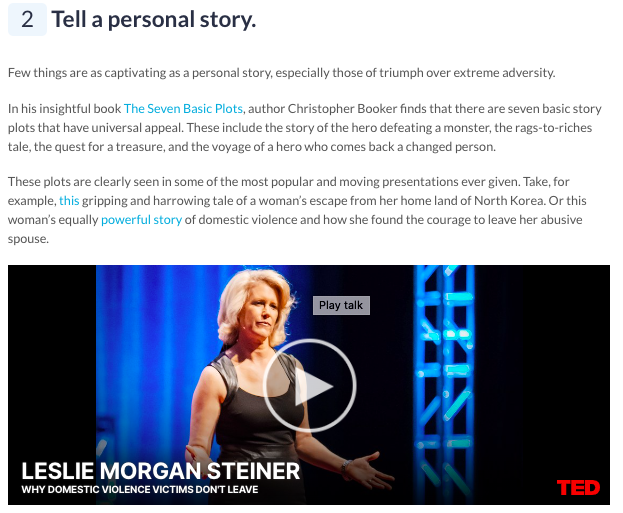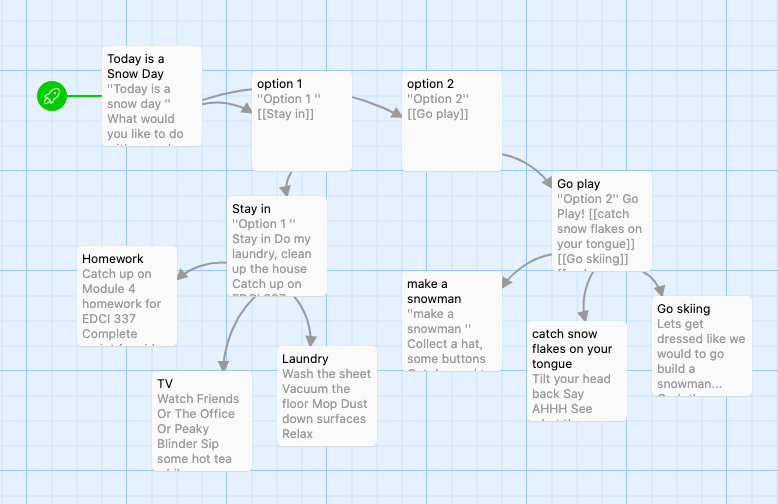Throughout this module we explored the storytelling with significance to interactive and multimedia learning. Most can reflect a story from the past and be able to recall the learning experience that was throughout the story being told. I always reflect the moral of the story with children’s fairy tales. We also explored an open source interactive non linear storytelling tool called Twine. This is a very unique tool that has many possibilities. I also started to capture some videos for the upcoming assignment and create a script.
What makes a good story?
Storytelling evokes emotions on the audience while by combining words with images in order to captivate the learner. If you are able to reflect past stories that you still remember from childhood, what was it about those stories that still stick in your mind today? There are many techniques employed during storytelling such as the Myer’s principals and Merrill’s principals. Story telling has also been apart of human lives from the caveman periods and is very much present today. It is a natural process we are drawn to in order to captivate our audience and make a meaningful and rememberable learning experience.

While completing the reading 7 Storytelling Techniques Used by the Most Inspriring TED Presenters, I was most compelled by the TED talk Why domestic violence victims don’t leave by Leslie Morgan Steiner. As Leslie talks about a very personal story, and is able to speak clearly, takes pauses and gestures to the audience. The talk ends up captivating the audience. She is able to immerse the audience in the story with the descriptions used about her domestic violence and engages and creates meaning to her story. She is able to capture some suspense and her hand gestures along with her descriptions in the presentation really complete the story.
When reflecting the story above, I am able to reflect the storytelling techniques I have used instinctively, and the ones I need to work on. Watching the video above, I could work on linking hand gestures to what I am talking about. I also need to focus on creating suspense, and not simply giving away the end to a story, all the while making sure I am not trailing off and keeping my audience engaged in what I am saying. Speaking clearly and taking pauses are basics that I am able to demonstrate while storytelling.

Above is the simple Twine story I created. The story is about if there is a snow day, and the choices you would make during the day to decide what you are going to do. This image was captured while learning the how to create an interactive non linear story. The learning curve for Twine took me awhile to get, and it ended up being quite time consuming. The handbook was very useful and once I dove into it I was able to add additional loops that went back to “stay in” as I further created the Twine story. I really enjoyed learning about Twine and will try to keep it in mind when creating learning projects for work.
Find my Video for a Learning Purpose here
Thank for for checking out my blog post. Feel free to add a comment below!
2024-03-12 at 5:15 pm
Hi Kat, loved your post for this module! I also struggled figuring out how to set up my story, but I can see that you created a fun interactive piece that is easy to follow. I also appreciate your self-reflection on your presenting skills. The ability to look at oneself and identify what you can improve isn’t always easy, but it appears you have figured out what you can improve which is awesome. Looking forward to reading your posts in the future!